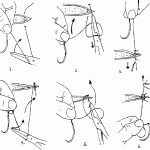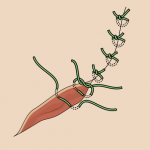In recent posts I highlighted some great training videos on suturing and on one and two handed knot tying. In this post I will recommend a video tutorial for instrument tying. As with the other suturing and knot tying skills, it is very important that medical students learn early in their careers how to instrument tie. This is the bread and butter of knot tying. If you are proficient with the instrument tie you will impress residents and attendings and they will be much more willing to give you responsibilities in the OR. The video below is a straight forward review and tutorial of the instrument tie. As with all other knots, remember that a square knot is not complete until you have made two opposing throws; otherwise you are tying granny knots.
Tag Archive: OR
How to suture a wound: A video tutorial
Before you start your third year of medical school you absolutely need to know how to suture. In this post I will provide some of the best video tutorials for suturing. (See my other posts to review one and two hand surgical knots and instrument tying.) During my general surgery rotation and OB/GYN countless attendings and residents would look at me as the case was ending and say, “hey med student, can you suture? Will you close while I dictate?” I was also asked to suture quite a few lacerations during my ED rotation. Learn early and learn often. Your school will likely have a suturing training course, but you need to keep fresh. I recommend the two videos listed below as tutorials. The first (not youtube, so you have to click on it) is the most professional and has some images to help understand the mechanics.
Video 1: From medicanalife.com
Video 2:
It is also very important to know a few common pimping questions (below). The Medscape website offers a very good and very free review of all of these questions.
- The indications for suturing vs. glue vs. healing by secondary intention
- Time to removal of stitches
- Types of suture, and when to use each
- How and when to use lidocaine and/or epinephrine prior to suturing
- Lethal dose of lidocaine (I have been pimped on this at least 10 times)
Proper gowning and gloving, a training video
As I mentioned in a previous post about how important it is to know proper scrub technique, it is equally important to know how to gown and glove. Most students will receive formal training in these techniques. However, if you are planning on being in the OR either for shadowing or elective rotations before you receive training, be sure to watch this video and the video on proper scrub technique
How to scrub for surgery, a training video
Most medical students will be required to take a crash course in scrubbing, gowning and gloving. However this may not happen until your surgery or OB rotation during third year. Many students will find their way into the ORs before those rotations. My first OR case was during a urology elective. I had no scrub training and the surgeon asked me right before the case, “Hey med student, go scrub, I need a first assistant.” I had to find a scrub tech in the hall to help me.
So, learn how to do it now! I have seen a lot of training videos, but this one is particularly good for scrubbing. I also highly recommend you see this video on gowning/gloving. You don’t want to mess that up either, the scrub nurses will kick you out.







 My name is Andrew and I am a first year resident training to be an ophthalmologist. I created ShortWhiteCoats to provide medical students, residents, and the public with all the information I spent so many hours looking for during medical school.
My name is Andrew and I am a first year resident training to be an ophthalmologist. I created ShortWhiteCoats to provide medical students, residents, and the public with all the information I spent so many hours looking for during medical school.







